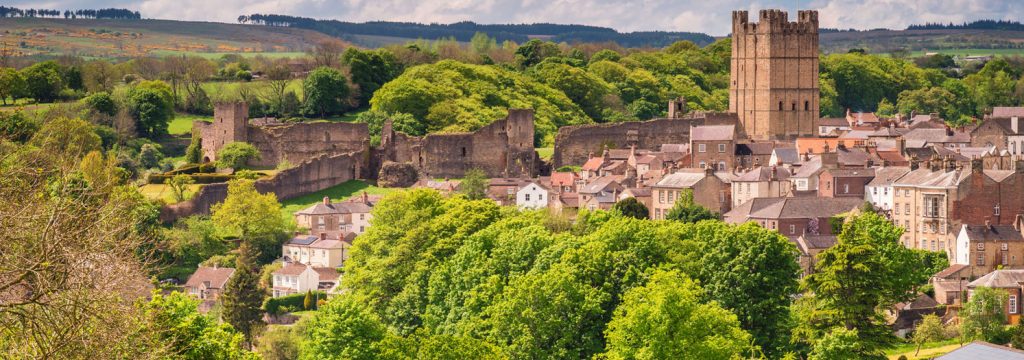
You’ve only got to spend a few minutes in Richmond to get a sense of the town’s historical importance. As you enter from the east you will see an abundance of large old buildings, but it is the 30 metre keep of the Richmond Castle that dominates the skyline and tells you that you are in a place that once was a seat of power.
With a history going back to 1080, Richmond Castle is one of the finest remaining Norman fortresses in the country and it really is a sight to behold. It was originally the home of Alain Le Roux de Penthievre of Brittany, a companion of William The Conqueror who was given the task of quelling rebellions in the north.
New structures were added onto the castle in the few hundred years that followed, including the aforementioned keep which was built by Duke Conan IV of Brittany in the late 12th century. By the 16th century, much of it had fallen into ruins, but in the early 19th century significant repairs were made and the castle became the barracks of the North Yorkshire Militia.
One of the castle’s most interesting yet chilling stories comes from that period. According to local legend, a group of soldiers were in the keep one evening and found a hidden tunnel. Unable to squeeze through its narrow entrance they sent for a drummer boy who was pushed through along with his drum.
The boy was told to walk as far as he could while beating his drum so that the soldiers could see how far the tunnel went from the ground above. The youngster had travelled around three miles before his drumming abruptly stopped. It is believed that the boy was killed by the tunnel’s roof falling in on him and a monument now stands at the place where his last beat was heard.
Eerily, some people that have stayed at the castle since claimed to have heard drumming echoing around its walls at night.
Many believe that the author Lewis Carrol was inspired by the story of the Richmond drummer boy when penning his seminal work Alice’s Adventures in Wonderland. Carroll, real name Charles Dodgson, was educated in the town between the age of 12 and 14 so will have been well aware of this local tale.
Behind the castle you will find the town’s huge cobbled market square which includes the somewhat unusual Holy Trinity Church. While most places of worship stand alone in their own grounds, this 12th century church is in the middle of the square and has had shops built onto its rear.
It also houses the Museum of the Green Howards Regiment on its east-facing side. The museum is filled with wartime relics and arsenal which tell the story of the regiment’s 300 year history.
The main historical feature in Richmond other than its castle is the Georgian Theatre Royal. Built in the late 18th century, it is one of the oldest original theatres in England. It closed in 1830 and was used for other purposes but was reopened during 1960s and has been given a multi-million pound restoration in the past 15 years.
As well as shows from the UK’s leading production companies, the theatre hosts guided tours that allow visitors to see behind the stage.
Just a mile from Richmond along the banks of the River Swale is Easby Abbey. The priory was founded by the Constable of Richmond Castle, Roald, in 1152 and is sometimes referred to as St Agatha’s.
It was once home to a stunning carved stone cross dating from the early ninth century known as the Easby Cross, but that now stands in the London’s Victoria and Albert in London.
Much of the abbey in is a ruinous state, but many of its original features were saved, including its choir stalls which can now been seen at Richmond Parish Church.
In terms of places to stay, Richmond has many options including established hotels and inns, guest houses, B&Bs, rental cottages and campsites.
